
 Depending on where you live, you may or may not have to deal with regular power outages or drastic weather changes like hurricanes and flooding. When that happens, you don’t want to be caught unprepared. But generators aren’t just for emergency situations; construction or RV needs also often call for remote electricity. Taking the Pulsar Dual Fuel 10,000W Generator w/Switch & Go Technology as a model, we take a look at some practical tips to help you choose the perfect generator for your needs, whatever they are. There is no one-size-fits-all generator, and the right one for you will depend on how you will use it most often. There are two types: portable and stationary. Stationary generators are much larger, with more options for fuel sources but also far more expensive. Portable generators are far smaller, cheaper, and of course can be moved around fairly easily (either on wheels or with the help of someone else). For this guide we’ll focus on portable generators, which are the better choice for most consumers.
Depending on where you live, you may or may not have to deal with regular power outages or drastic weather changes like hurricanes and flooding. When that happens, you don’t want to be caught unprepared. But generators aren’t just for emergency situations; construction or RV needs also often call for remote electricity. Taking the Pulsar Dual Fuel 10,000W Generator w/Switch & Go Technology as a model, we take a look at some practical tips to help you choose the perfect generator for your needs, whatever they are. There is no one-size-fits-all generator, and the right one for you will depend on how you will use it most often. There are two types: portable and stationary. Stationary generators are much larger, with more options for fuel sources but also far more expensive. Portable generators are far smaller, cheaper, and of course can be moved around fairly easily (either on wheels or with the help of someone else). For this guide we’ll focus on portable generators, which are the better choice for most consumers. 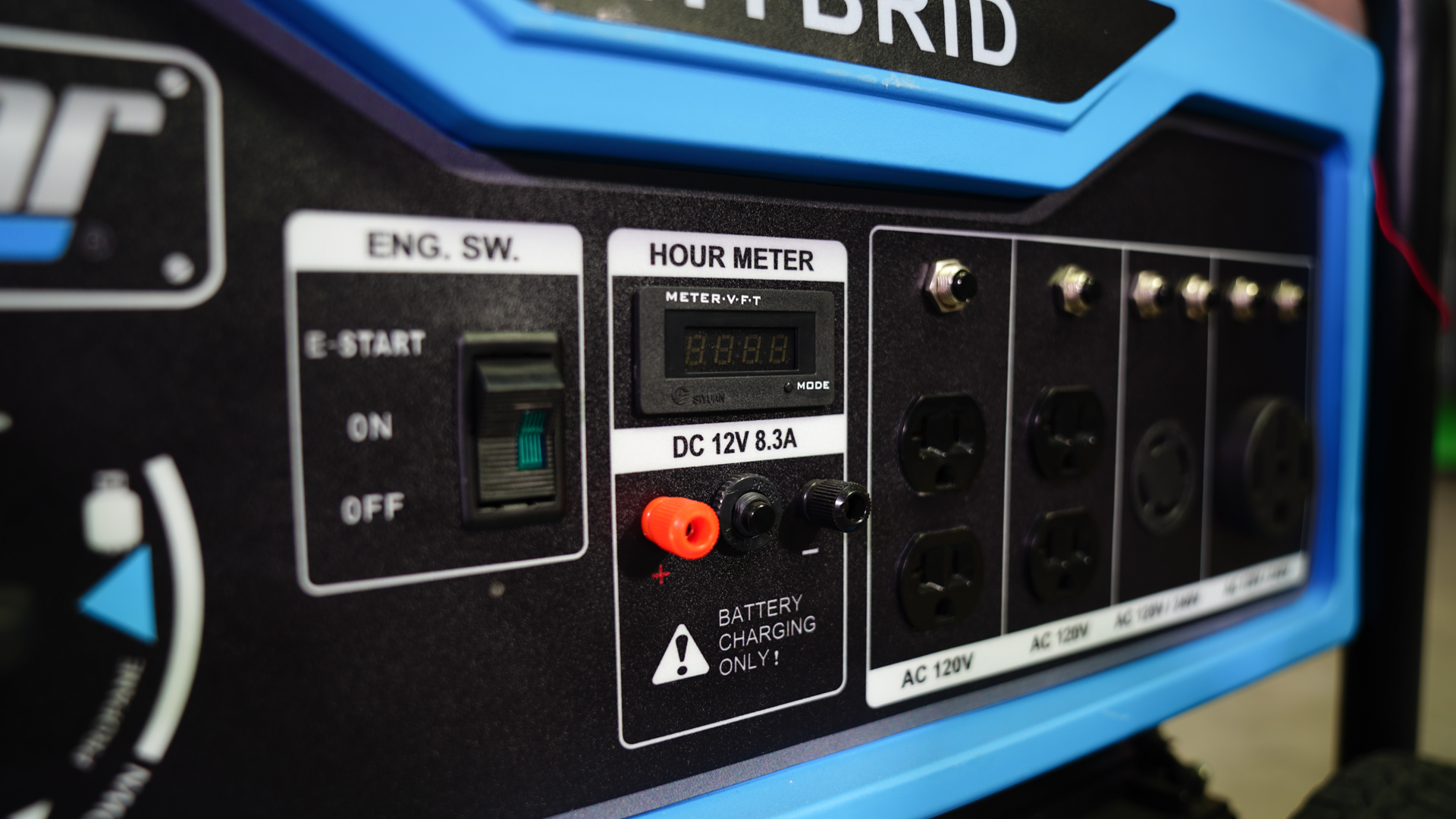
DIY electricity
The first step to choosing a generator is to determine what it will be used for. The ability to create your own electricity can be extremely practical for emergency backup situations. Keeping food fresh in a refrigerator/freezer, keeping the AC or furnace running, using a pump to combat basement flooding, and keeping lights (or even the whole house) powered can pay for itself in one go in the event of a bad storm. Aside from an emergency backup though, if you need job-site power for construction, on-location film shoots, farm work, or even when RV camping a generator can come in handy. 
Things to consider when choosing a generator
Once you know what you will use the generator for most frequently, you can start looking at the features that matter when choosing a unit. How much power do you REALLY need? You don’t need to swing for the fences and go for the most wattage you can find. Instead figure out how much you will actually need. This will save you extra cost up front, and larger/more powerful engines consume more fuel during operation as well. How do you calculate what power you will need? First you need to figure out which devices you would be running on the generator power at the same time. Then you should look up the running power requirements for each of them, as well as the starting (or surge) watts. Tip: Electronics with motors require more power to start up than they do to run, so when you are using a generator for multiple appliances you want to start them one at a time, with a three second delay in between. Next add up all the running watts for the items you would be running at once, along with the highest starting wattage of the devices you will be operating. This will help you determine what kind of power you need from a generator in order to service your use case. 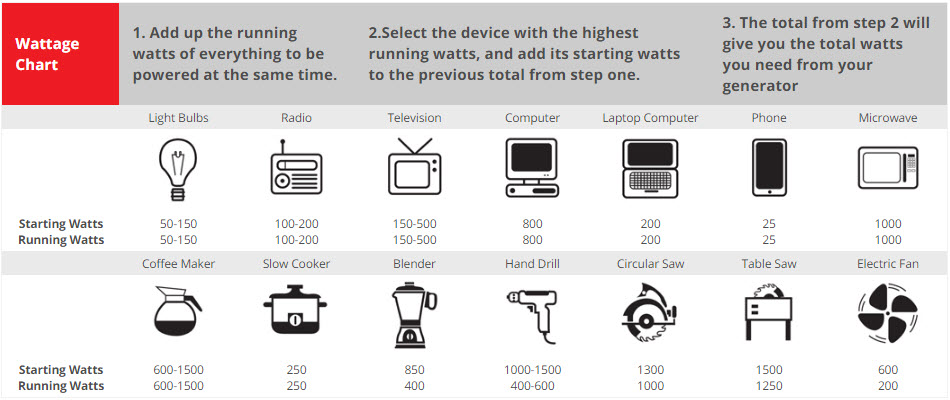 For a full worksheet from Pulsar with more appliances you can use to calculate your wattage needs, you can view it here. For example, on the Pulsar unit, the peak power for gas is 10,000W with 8,000W constant power, while the propane is 9,000W peak 7,000W rated coming from the 420cc, 15HP overhead valve engine. What this means is that with our beast of a unit I could run a refrigerator/freezer (700W), 6 x 60W light bulbs (360W), a space heater (1,800W), a microwave (1,000W), washing machine (1,150W), and gas dryer (700W) – for a total of 7,960W- all at once on gasoline power, but not if I was using propane as the fuel source.
For a full worksheet from Pulsar with more appliances you can use to calculate your wattage needs, you can view it here. For example, on the Pulsar unit, the peak power for gas is 10,000W with 8,000W constant power, while the propane is 9,000W peak 7,000W rated coming from the 420cc, 15HP overhead valve engine. What this means is that with our beast of a unit I could run a refrigerator/freezer (700W), 6 x 60W light bulbs (360W), a space heater (1,800W), a microwave (1,000W), washing machine (1,150W), and gas dryer (700W) – for a total of 7,960W- all at once on gasoline power, but not if I was using propane as the fuel source. 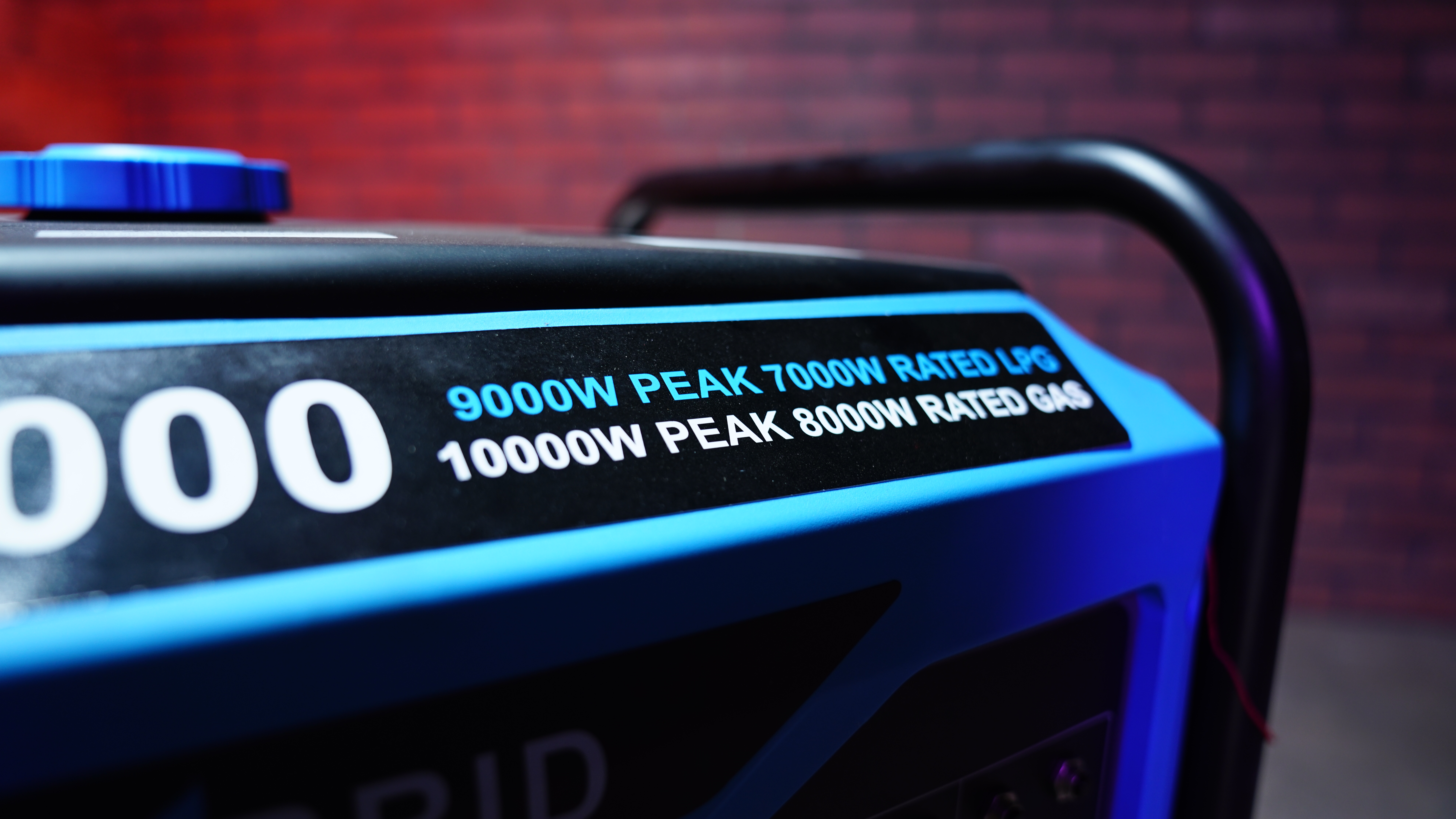 Max (peak) power vs. rated power There are two power ratings listed on generators, and if you don’t know the difference it can be confusing. Similar to the ratings on a sound system, the “peak power” isn’t what you will be getting all the time when you use it. That’s what “rated power” is (generator manufacturers are much more clear about this difference in their marketing than audio companies). Peak power is the max output you can possibly get from the machine. Most generators are pretty up front with both numbers, but be sure you are paying attention to the rated power and not just the peak. Also worth noting, the peak power can only be used for a few seconds, while the rated power can be pumped out consistently for extended periods of operation.
Max (peak) power vs. rated power There are two power ratings listed on generators, and if you don’t know the difference it can be confusing. Similar to the ratings on a sound system, the “peak power” isn’t what you will be getting all the time when you use it. That’s what “rated power” is (generator manufacturers are much more clear about this difference in their marketing than audio companies). Peak power is the max output you can possibly get from the machine. Most generators are pretty up front with both numbers, but be sure you are paying attention to the rated power and not just the peak. Also worth noting, the peak power can only be used for a few seconds, while the rated power can be pumped out consistently for extended periods of operation. 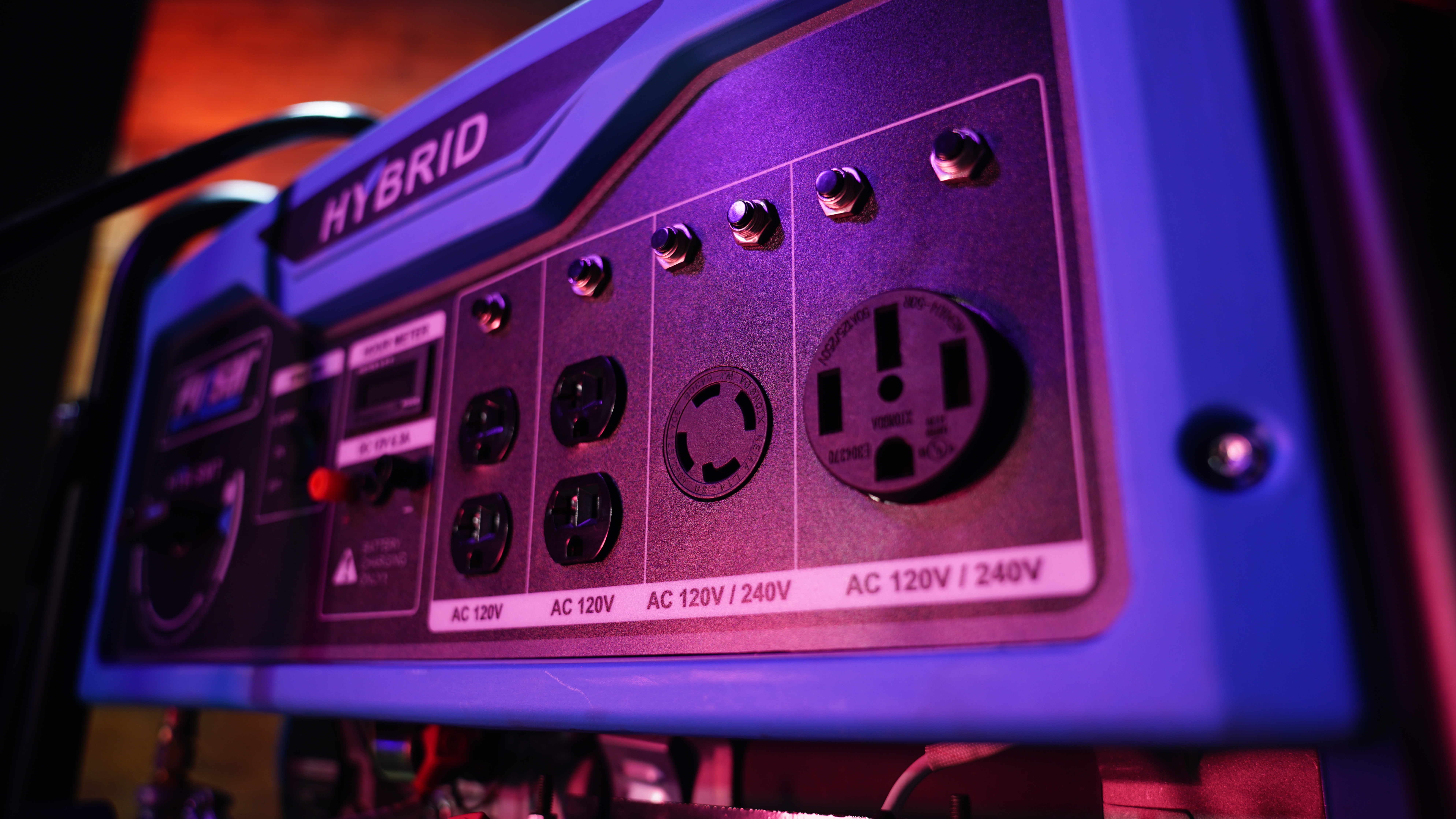 Outputs/receptacles Are you going to be using the generator as a remote power source for only one or two low wattage devices at a time, or will you be powering multiple devices at once with high energy needs? Will you be hooking the generator up to your circuit breaker box to keep the whole house running in an outage? The use case you already determined should help you figure out what receptacles you need, and you can use this to help fine tune your search. This Pulsar generator has four 120V, one 120V/240V twist-lock, 120V/240V 50A RV, 12V DC outputs which gives you plenty of options for devices to run. Fuel sources Most generators are gas, diesel, or propane powered and some like our Pulsar have a hybrid fuel source option. This makes it nice to have the ability to change sources depending on the situation or availability. Gasoline doesn’t last for a very long time when it’s left sitting around. You need to use stabilizer for long periods of storage, and it can get expensive to operate for extended periods of time. It is, however, easily accessible during normal events (hurricanes have a tendency to take out gas stations though, which would cut off your supply). Diesel is cheaper, has a longer shelf life, and is efficient, but has a tougher time dealing with cold weather conditions. Propane is the safest to transport (and store forever), burns cleaner, and you don’t have the worry of standing fuel getting gunked up over time or rusting a gas tank. Some stationary generators use natural gas, which is the cheapest option, but generally only permanent generators have natural gas power Our Pulsar here has “Switch & Go” technology, where you don’t need to burn all the fuel in the line from one source before switching to another. This is pretty useful because some dual fuel generators need to clear the line by burning up all the fuel before switching sources.
Outputs/receptacles Are you going to be using the generator as a remote power source for only one or two low wattage devices at a time, or will you be powering multiple devices at once with high energy needs? Will you be hooking the generator up to your circuit breaker box to keep the whole house running in an outage? The use case you already determined should help you figure out what receptacles you need, and you can use this to help fine tune your search. This Pulsar generator has four 120V, one 120V/240V twist-lock, 120V/240V 50A RV, 12V DC outputs which gives you plenty of options for devices to run. Fuel sources Most generators are gas, diesel, or propane powered and some like our Pulsar have a hybrid fuel source option. This makes it nice to have the ability to change sources depending on the situation or availability. Gasoline doesn’t last for a very long time when it’s left sitting around. You need to use stabilizer for long periods of storage, and it can get expensive to operate for extended periods of time. It is, however, easily accessible during normal events (hurricanes have a tendency to take out gas stations though, which would cut off your supply). Diesel is cheaper, has a longer shelf life, and is efficient, but has a tougher time dealing with cold weather conditions. Propane is the safest to transport (and store forever), burns cleaner, and you don’t have the worry of standing fuel getting gunked up over time or rusting a gas tank. Some stationary generators use natural gas, which is the cheapest option, but generally only permanent generators have natural gas power Our Pulsar here has “Switch & Go” technology, where you don’t need to burn all the fuel in the line from one source before switching to another. This is pretty useful because some dual fuel generators need to clear the line by burning up all the fuel before switching sources. 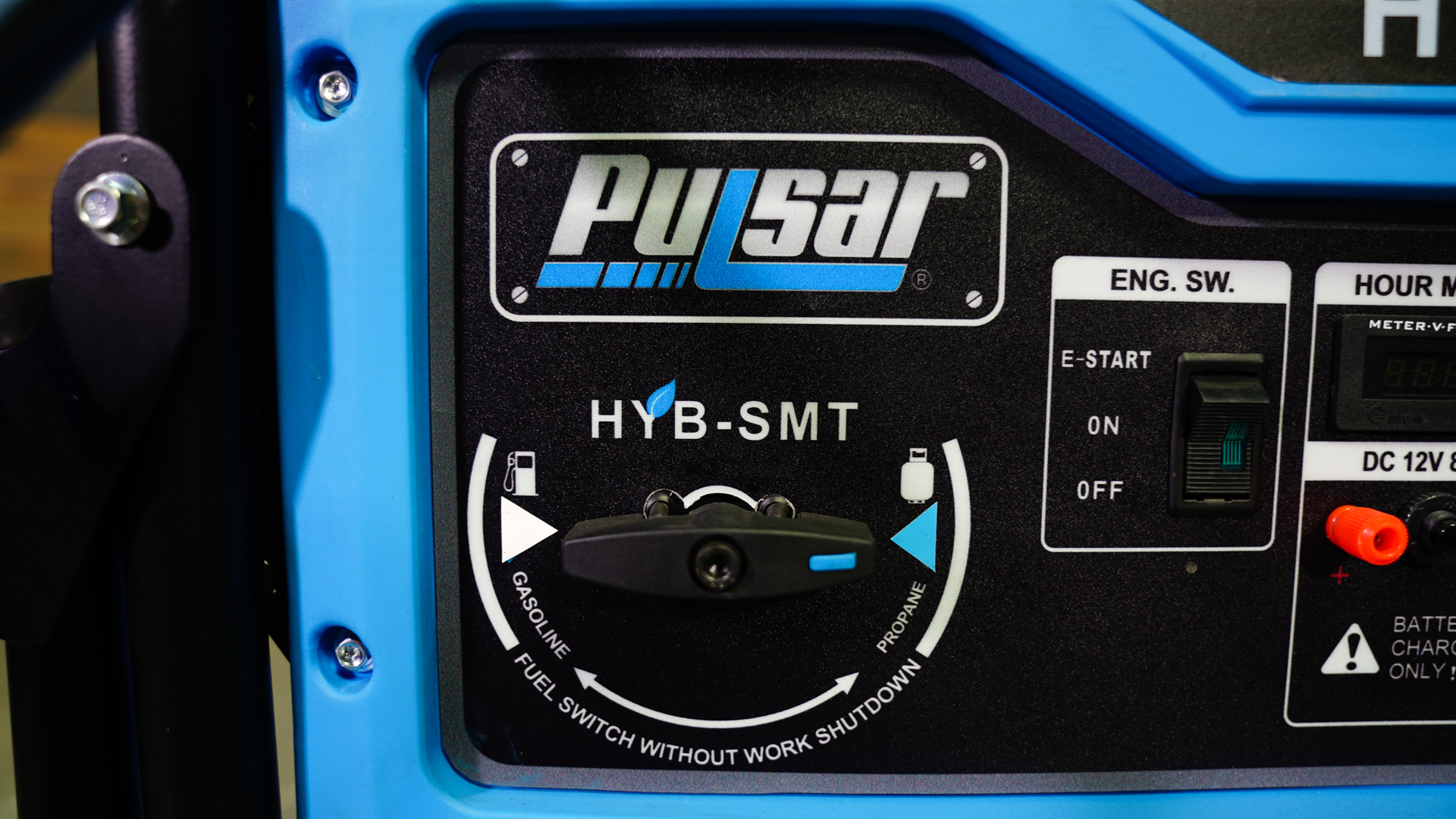
Other factors to consider
Power variation On the Pulsar, the peak for gas is 10,000W
with 8,000W rated, while the propane is 9,000W peak and 7,000W rated. You lose a good 1,000W of power switching from gas to propane, so it’s important to take into consideration what sort of fuel source you plan to use most often and the power associated with the unit. Also, some generators don’t come with their own battery, so you will need to scoop one of those up on your own if it isn’t included. The Pulsar comes packing a battery, so out of the box it is good to go. Noise Depending on how/where you will use your generator, noise level could be a consideration when shopping around. Many portable generators are a bit on the louder side, while stationary generators for home use can be quieter, though this varies by make and model. If you plan to use it primarily as a home appliance backup, noise probably isn’t the greatest concern since it will be for emergency use. If you plan on taking it RVing though, noise could be something to consider for the sake of your neighbors.
Buy Pulsar Dual Fuel 10,000W Generator w/Switch & Go Technology- $899
Portability It may seem inherent, but mobility & use case is a big factor when considering a portable generator to buy. Many generators, like the Pulsar, have wheels and fold down handles, which makes them very convenient to cart around since lifting a 200lb hunk of metal out of a truck bed isn’t ideal. Will your generator be moved frequently? If you are getting something for a job-site or RV use, then portability is an important factor to consider. Wheel kits are also available, but you can’t make a generator smaller. Note that while you should never run a generator in a closed space (garage or home) transportation and storage might be concerns for your application. Start method Electric push start is great and makes things very easy for anyone to start quickly. Especially when talking about cold starts in winter, this can be a good way to ensure smooth operation. Rope pulls are included as either the primary or secondary start method (on push starts). 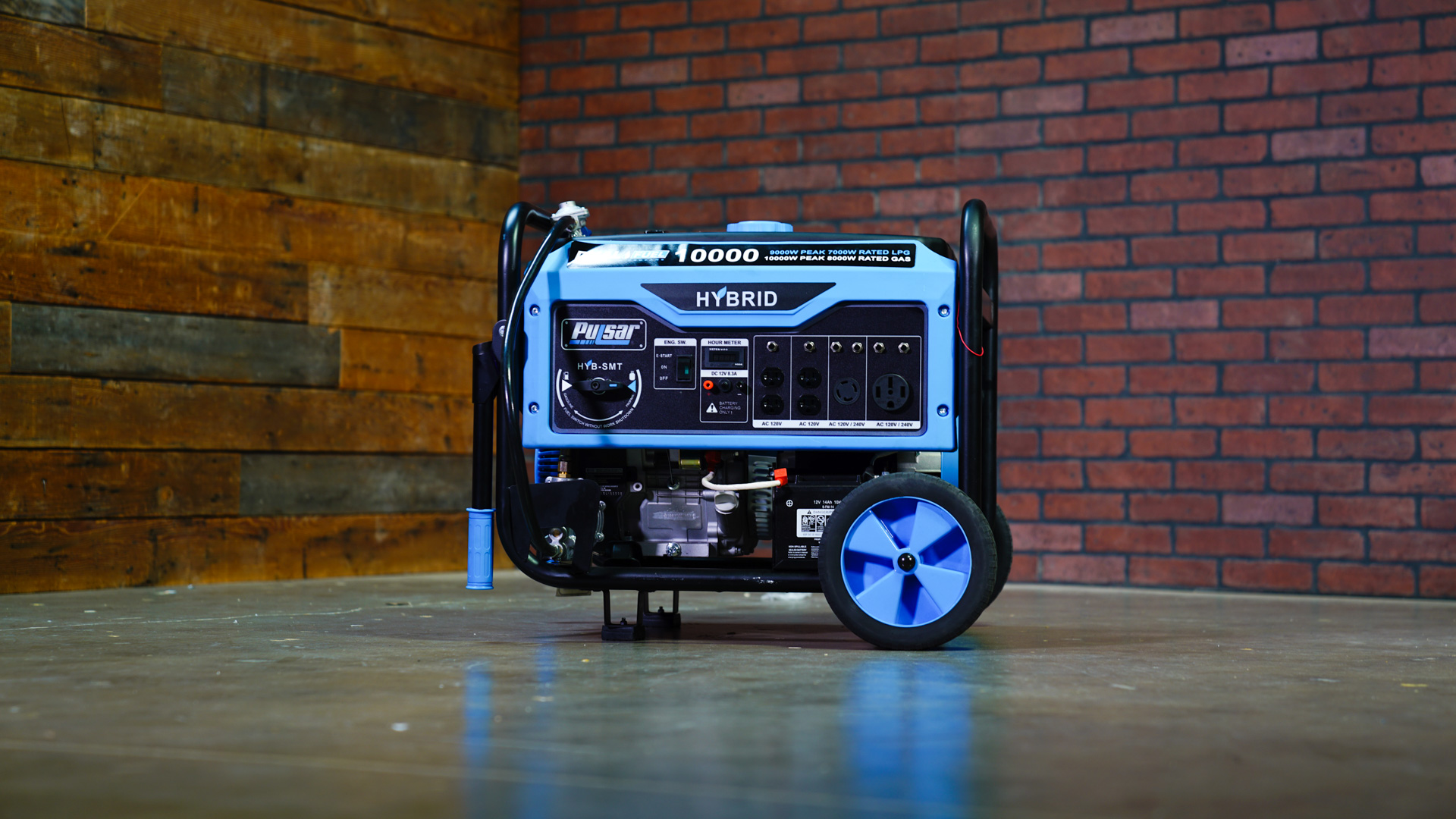 A generator can be a life saver in a tight situation, and keep everything operating smoothly with some level of normalcy when chaos hits. They can also make life a whole lot easier when work or play call for remote power, and having the right unit for your specific use makes all the difference.
A generator can be a life saver in a tight situation, and keep everything operating smoothly with some level of normalcy when chaos hits. They can also make life a whole lot easier when work or play call for remote power, and having the right unit for your specific use makes all the difference.
Featured in this article:
Pulsar Dual Fuel 10,000W Generator w/Switch & Go Technology- $899

